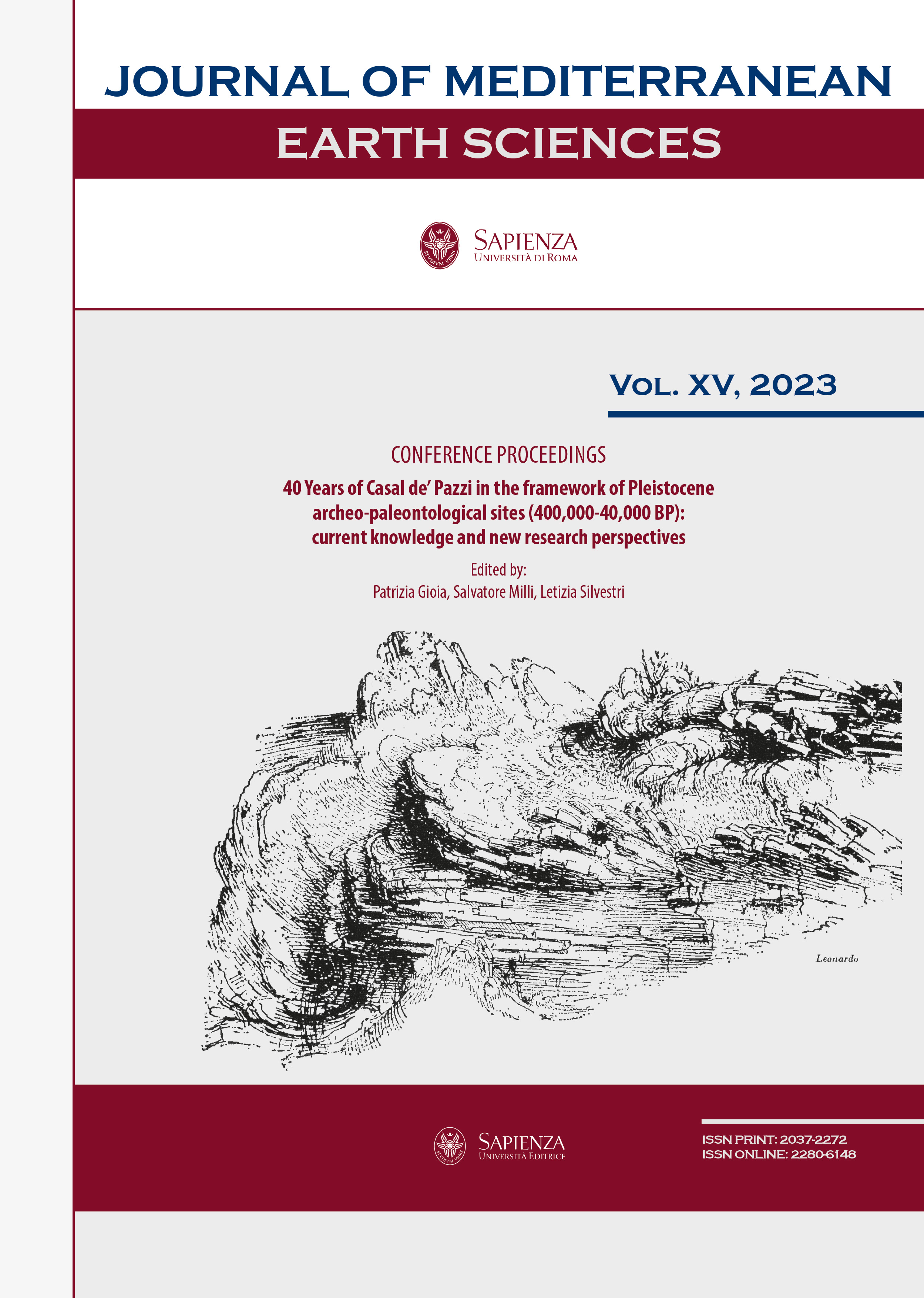The Casal de’ Pazzi site in the light of new geological and geomorphological data
DOI:
https://doi.org/10.13133/2280-6148/18300Abstract
The article discusses the Pleistocene deposit of Casal de’ Pazzi in Rome, which was discovered during the construction of a new neighborhood of Rebibbia in 1981. The excavation, spanning from 1981 to 1985, unveiled fluvial gravelly deposits of volcanoclastic composition containing abundant fauna remains and lithic industry. These deposits, originally assigned to the Aniene river, are placed on a pyroclastic unit attributed to the Lionato Tuff. Subsequently, it was assigned to the Pozzolanelle pyroclastic unit based on a subsequent excavation campaign conducted in 2013. Both the pyroclastic units were deposited during the Villa Senni eruption back approximately 357,000 years B.P. This article provides details about the depositional behavior of these deposits and their relationship with the eruptive event. It also discusses on the morphological and geological setting of the Casal de’ Pazzi site, in the light of new data derived from the 2013 excavation campaign. Finally, the article explores stratigraphic data collected in the area by Massimo Ruffo during the first excavation program from 1981 to 1985, emphasizing the importance of his meticulous documentation in reconstructing the stratigraphy and gaining a deeper understanding of the Casal de’ Pazzi site.
Downloads
Published
How to Cite
License
The submission has not been previously published, nor is it before another journal for consideration (or an explanation has been provided in Comments to the Editor).


